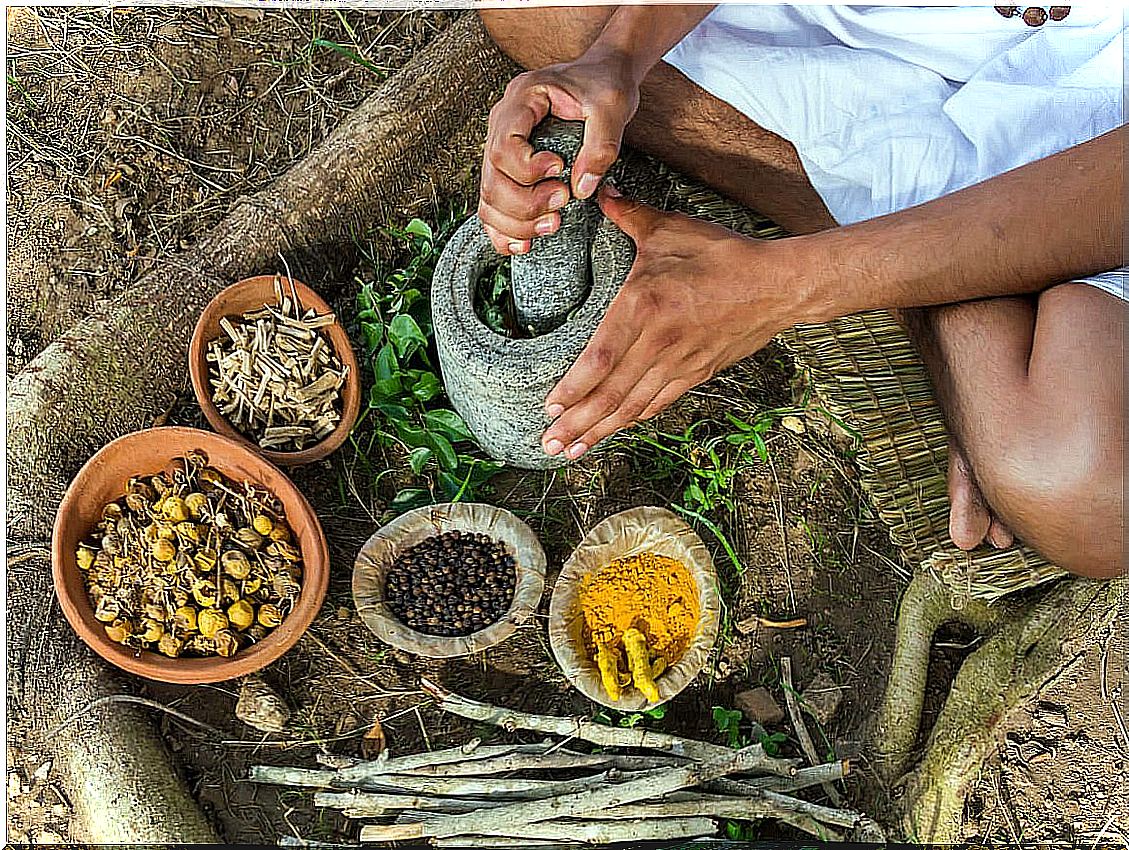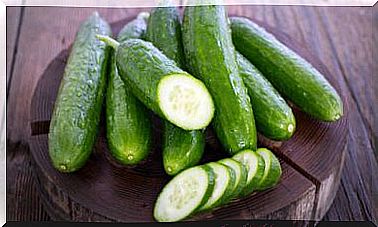Ayurvedic Diet: What Is It And What Are Its Benefits?
Ayurveda is one of the oldest traditional medical practices that is developed in the Indian subcontinent. Ho and today it is recognized as one of the formal health systems of the country and the Ayurvedic diet is one of its pillars.
The word ayurveda in Sanskrit means science or knowledge of life . It places the emphasis on good health and disease prevention through lifestyle, massage, meditation, and some herbal remedies. We present below the principles of its eating pattern.
What is the Ayurvedic diet?
This diet is more of a healthy way of eating and not a system where certain foods are allowed and prohibited . The main objective is to maintain balance in each person, since a good state of health depends on it. And it is food that helps balance it.
There are 3 different types of dosha that are defined as a series of attributes that each person possesses. They are based on aspects such as body composition, character or the predominant element. And these give people the keys to develop in life in an optimal way.
The dosha are as follows:
- Vata: quick-minded, flexible and creative. They are usually thin people with a tendency to suffer from cold, digestive problems and difficulty in focusing the mind.
- Pitta : intelligent, hard-working and firm. Of medium constitution, its weak point is inflammation. These are individuals with a good appetite and no digestion problems.
- Kapha: serene and affectionate. Strong and resistant carving. They have difficulty losing weight and often have problems with constipation.

In addition to following the appropriate diet for the dominant personality, the Ayurvedic diet is based on a series of guidelines and routines that must be respected. The most prominent ones for all types of people are the following:
- Eat 3 meals a day to allow time to complete the entire cycle of digestion without interruption. It is also essential to allow 3 hours before going to bed.
- Eat your fill and don’t wait to be full.
- Give priority to fresh, whole foods.
- Include the 6 basic flavors in each of the meals.
- Eat consciously and in a relaxed environment.
Foods allowed and discouraged
In Ayurveda, guidelines are established on what, how and when to eat depending on the type of body or predominant dosha. There are particular and detailed recommendations on the foods that can be included in the day to day, depending on whether the vata, pitta or kapha type predominates.
Vata
For these people, the diet must be nutritious, with cooked dishes, at a warm temperature and a very mild seasoning. It is important to maintain a regular schedule. The predominant foods have to be the following:
- Oatmeal and rice.
- Eggs, chicken and fish.
- Fermented dairy products.
- Legumes in limited quantities.
- Sweet, ripe and juicy fruits.
- Almonds, walnuts and seeds in general. It is convenient to soak them.
- Sesame oil.
- Turmeric, cumin, coriander, or ginger for seasoning.
Instead, it is necessary to avoid other products:
- Red meat.
- Hard cheeses.
- Astringent and dried fruits, such as blueberries, apples or pomegranates.
- Raw vegetables and mushrooms.
Pitta
Cold nature and lightly seasoned foods are recommended for these people . Sweet, refreshing and bitter flavors must predominate. For them it is a good option to follow a vegetarian diet. The foods that should be reinforced are the following:
- Barley, rice, oats and wheat.
- Chicken and turkey as sources of animal protein.
- Milk, ghee , butter, and unsalted cheese.
- Legumes in small quantities. The best are black lentils, chickpeas, and mung beans.
- Sweet fruits, such as apples, blueberries, and dates.
- Salads and raw vegetables.
- Sunflower and pumpkin seeds every now and then.
- Cardamom, cinnamon, fennel and turmeric.
Forbidden foods for the dominant pitta personality can be summed up in this list:
- Products of animal origin, especially shellfish and eggs.
- Red and yellow lentils.
- Acid fruits.
- Tomatoes, radishes, chili peppers, raw onion and garlic.
- Most seeds and nuts, as they are very oily.
- Hot spices
Kapha
For this last dosha, the most recommended diet is one in which hot, light and dry foods predominate. Bitter, astringent and spicy taste also have preference. This is the list of the most recommended foods for them:
- Buckwheat and millet.
- Chicken, rabbit and seafood in dry cooking (baked or roasted).
- Ghee and goat milk.
- Red lentils, black beans and mung.
- Mango, peach, apricot and pear.
- Vegetables grown above the ground, especially green leafy ones (spinach, chard or cabbage).
- Pumpkin and sunflower seeds in small quantities.
- All kinds of spices, particularly garlic and ginger.
It is necessary to avoid the following products:
- Sweet potatoes, oats and wheat.
- Any type of dairy and fat product, especially fried foods.
- Very sweet or sour fruits.
- Root vegetables, such as turnips, beets, or radishes.
- Seeds and nuts in general.
- All sweeteners and salt.

Pros and cons of the Ayurvedic diet
The set of routines and foods that are part of the Ayurvedic regime are focused on improving the state of health in a broad sense. Thanks to all of them, a series of strengths and benefits that this type of diet can provide are deduced:
- It promotes a healthy diet, since its base is fresh food cooked in a simple way.
- Those of plant origin predominate, which have positive effects on the prevention of diseases.
- Encourage mindful eating.
- It is accompanied by a healthy lifestyle.
- Can lead to a balanced body weight, good digestion, a better lipid profile and a lower risk of chronic diseases.
However, it is necessary to mention a series of weak points that must be taken into account when starting with this type of diet:
- It’s not just about eating and avoiding a number of foods; You have to keep in mind all the routines that accompany them and follow them in the same way.
- It may be difficult to buy some products and adapt to their taste.
- Sometimes it may require more dedication, since the way of cooking and preparing is taken into account.
Recommendations to specify the Ayurvedic diet
Before starting the Ayurvedic diet, it is important to put yourself in the hands of a specialist. This is the one that must determine the dosha of each person and establish possible problems or existing imbalances that will have to be treated with food.
It is necessary to establish a good organization when following routines, as these are essential. People who follow it should take a reasonable amount of time for personal adaptation, both to new habits and to some unusual foods.









